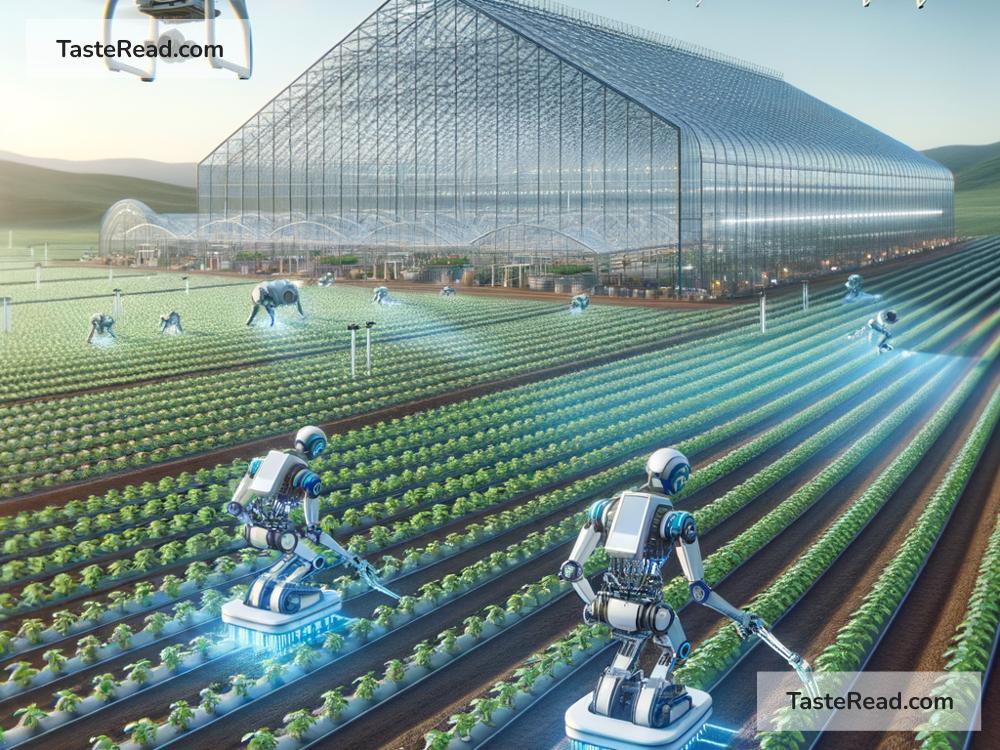The Future of Agricultural Robotics: A Game-Changer in Farming
Farming has played a crucial role in human survival for thousands of years. From planting crops by hand to using giant machines, agriculture has gone through numerous changes. Today, as technology advances, a new chapter begins: agricultural robotics. In this blog, we’ll explore the future of agricultural robots, how they’re transforming farming, and what this means for farmers and the world.
What Are Agricultural Robots?
Agricultural robots are machines equipped with advanced technology to help farmers grow crops, care for livestock, and manage their land. These robots, often called “agri-bots,” are designed to perform tasks quickly, efficiently, and with greater accuracy than humans can. They use sensors, cameras, artificial intelligence (AI), and automated systems to handle jobs such as planting seeds, harvesting crops, monitoring soil health, and even weeding.
The Rising Need for Agricultural Robotics
Several challenges in modern farming are pushing the development of agricultural robots. For starters, the global population continues to grow and is expected to reach nearly 10 billion by 2050. Feeding more people requires producing more food, and agricultural robots can help increase crop yields without overusing resources such as land and water.
Additionally, labor shortages in agriculture are becoming a worldwide issue. Many young people are leaving rural areas for city life, making it hard for farmers to find workers. Agricultural robots can step in to perform labor-intensive tasks, reducing dependency on human workers.
Another critical factor is sustainability. With climate change affecting farming, robots can help minimize waste, conserve resources, and run farms in an eco-friendly way. For example, precision agriculture—a farming method that uses robotics and AI—can apply fertilizers and pesticides only where necessary, reducing environmental harm.
What Can Agricultural Robots Do?
The possibilities for agricultural robots are endless. Here are some of the most exciting ways these machines are being used:
1. Planting and Harvesting
Traditionally, planting seeds and harvesting crops require a lot of manual labor. Agricultural robots can automate these tasks. Robotic planters ensure seeds are placed at the perfect depth and spacing. Similarly, robotic harvesters can pick fruits and vegetables gently without damaging them.
2. Weeding and Pest Control
Robots equipped with sensors and cameras can identify weeds and pests in the fields. Instead of spraying chemicals over an entire farm, these robots can target problem areas, using less pesticide and protecting the environment.
3. Soil and Crop Monitoring
Healthy soil is essential for growing strong crops. Robots with advanced technology can analyze the soil for nutrients, moisture, and pH levels. They can also monitor crops for diseases and other issues, helping farmers make informed decisions.
4. Livestock Management
In addition to crops, robots are being used to look after animals. For example, robotic milking machines are transforming dairy farming, while drones monitor livestock health and location on large farms.
5. Autonomous Vehicles
Driverless tractors and drones are taking over farming tasks. These vehicles can work day and night without human supervision, saving time and increasing productivity.
Benefits of Agricultural Robotics
The future of agricultural robots is bright for many reasons. Here are some key benefits:
– Higher Efficiency
Robots don’t need breaks or sleep, which means they can work continuously. This can significantly increase the speed of farming activities, allowing farmers to save time and money.
– Better Precision
Compared to humans, robots make fewer errors. With their advanced technology, they can target specific plants, animals, or areas of land with greater accuracy.
– Cost Savings
While agricultural robots can be expensive upfront, they can save money in the long run by reducing the need for labor, minimizing waste, and preventing crop loss.
– Environmental Protection
Robots can use fewer resources such as water, fertilizers, and pesticides, which is good for the planet. They can also play a role in combating climate change by reducing greenhouse gas emissions.
Challenges Ahead
While agricultural robotics has great potential, there are still challenges to overcome. For one, the initial cost of buying and maintaining robots can be high, which might limit access for small-scale farmers. Additionally, training farmers to use and repair these machines will be important. Lastly, there is the question of how robotics will impact traditional farming jobs. Some worry that robots may replace human workers, leaving many unemployed.
However, as technology evolves and prices drop, agricultural robotics is likely to become more accessible to everyone. Governments and organizations can also step in to provide support, making sure small farmers benefit from robotics as much as large farms.
Conclusion: Embracing the Future
Agricultural robotics is no longer just a dream—it’s becoming a reality. From planting and harvesting to monitoring crops and livestock, robots are changing the way farming is done. These machines promise better efficiency, precision, and sustainability, making them essential for feeding the world’s growing population.
Though challenges exist, the benefits of agricultural robotics far outweigh the drawbacks. As we step into the future, combining traditional farming wisdom with modern robotic technology could be the key to creating a more sustainable, productive, and profitable agricultural industry.
Farmers, scientists, and innovators are working together to make agricultural robotics a mainstream solution. With these incredible machines, the future of farming looks brighter than ever.


